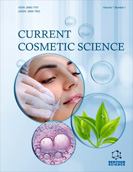Abstract
Background: Poly (methyl methacrylate) (PMMA) bone cement is widely used in orthopaedic procedures of vertebroplasty (VP) balloon kyphoplasty (BKP) and cemented total joint arthroplasty (TJA). While only very few PMMA bone cement brands are approved (by the appropriate regulatory authority) for VP and BKP, many are approved for cemented TJA. Selection of cement for these applications must be done considering a very large number of clinically relevant properties, such as injectability, setting time, maximum polymerization temperature, polymerization rate, compressive strength, fracture toughness, fatigue life, and cytocompatibility. In the literature, there is a shortage of studies on methodologies for the selection of PMMA bone cement.
Purpose: The present work addresses the aforementioned shortcoming of the literature.
Methods: Three material selection methodologies (Desirability, Utility, and Weighted Property Index Methods) were applied to two study sets. Study Set 1 comprised three experimental types of bone cement for VP or BKP and five in vitro values of clinically-relevant cement properties and Set 2 comprised six approved antibiotic-loaded bone cement (ALBC) brands for cemented TJA and in vitro values of four clinically-relevant cement properties.
Results: For each of the study sets, slight differences in the ranks of the materials were found depending on the selection methodology used, but when all the selection methodologies were considered, there was clear differentiation in ranks. The relative attractions and challenges of the three selection methodologies used are highlighted.
Conclusion: Decision makers in orthopaedic hospitals and clinics as well as orthopaedic surgeons, should find the results of the present study useful.
Keywords: Poly (methyl methacrylate) bone cement, glass ionomer cement, vertebroplasty, balloon kyphoplasty, total joint arthroplasty, orthopaedic.
Graphical Abstract
[http://dx.doi.org/10.1002/jbm.b.30398] [PMID: 16196037]
[PMID: 31928097]
[http://dx.doi.org/10.2106/JBJS.20.00102] [PMID: 32890041]
[http://dx.doi.org/10.1007/978-3-642-59762-6]
[http://dx.doi.org/10.2106/JBJS.E.01126] [PMID: 17079409]
[http://dx.doi.org/10.1002/jbm.b.31220] [PMID: 18823020]
[http://dx.doi.org/10.3390/biomedicines9010026]
[http://dx.doi.org/10.1007/s11999-010-1281-0] [PMID: 20195806]
[http://dx.doi.org/10.3390/ma12234002] [PMID: 31810305]
[http://dx.doi.org/10.1002/(SICI)1097-4636(199722)38:2<155::AID-JBM10>3.0.CO;2-C] [PMID: 9178743]
[http://dx.doi.org/10.1007/s10856-009-3845-7] [PMID: 19655232]
[http://dx.doi.org/10.1016/j.matdes.2008.04.022]
[http://dx.doi.org/10.1016/j.matdes.2012.08.067]
[http://dx.doi.org/10.1016/j.matdes.2012.01.016]
[http://dx.doi.org/10.1007/978-3-642-45511-7]
[http://dx.doi.org/10.1007/s00158-004-0473-1]
[http://dx.doi.org/10.1109/EMEIT.2011.6023666]
[http://dx.doi.org/10.1016/j.asr.2009.11.017]
[http://dx.doi.org/10.1016/j.matdes.2011.09.027]
[http://dx.doi.org/10.3390/ma14082084] [PMID: 33924189]
[http://dx.doi.org/10.1007/978-3-662-62924-6_8]
[http://dx.doi.org/10.1007/s12633-020-00452-y]
[http://dx.doi.org/10.1177/0020294020925841]
[http://dx.doi.org/10.1016/j.jmrt.2020.12.114]
[http://dx.doi.org/10.18488/journal.11/2014.3.4/11.4.203.224]















